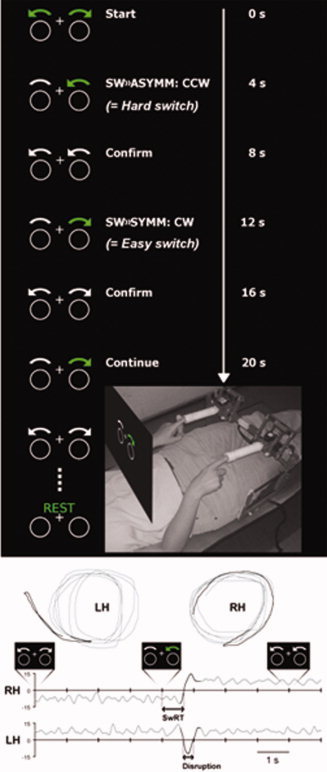Figure 1.

Task performance in the MRI scanner. (A) Subject position and custom MRI compatible joysticks are shown. Visual stimuli were projected onto a screen that occluded vision below the shoulders and were viewed via a 45° mirror. Two circles and a central fixation cross were always visible. Imperative (green arrows) and confirmation cues (white arrows) were presented for 800 ms, separated by 4 s. Switching from symmetric to asymmetric (SW»ASYMM) or from asymmetric to symmetric (SW»SYMM) movement patterns required the right hand to change circling direction: Clockwise (CW) or counter‐clockwise (CCW). (B) Representative trace from one participant performing symmetric circles followed by a switch to asymmetric circles (LH: left hand and RH: right hand). Top: Left‐ and right‐hand joystick displacement, bottom: Radial velocity plotted against time (positive radial velocity = CW circles, negative radial velocity = CCW circles). The trace segments in dark gray highlight the right‐hand switch and contralateral disruption of the left hand. [Color figure can be viewed in the online issue, which is available at wileyonlinelibrary.com.]
